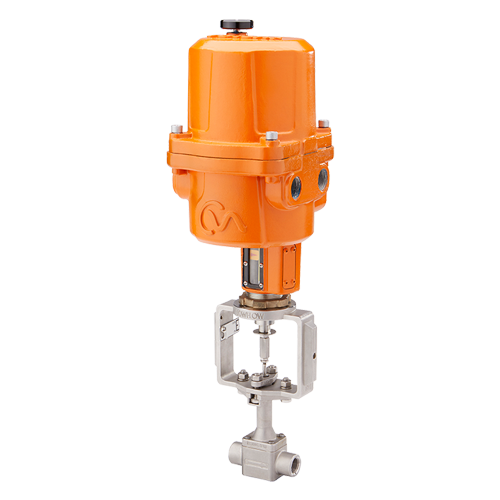The Role of Control Valves in Fluid Flow Administration Equipment
The Role of Control Valves in Fluid Flow Administration Equipment
Blog Article
Achieve Seamless Assimilation and Control With Quality Building Automation Controls
In the realm of contemporary structure monitoring, the importance of quality structure automation controls can not be overstated. As modern technology proceeds to development, the assimilation and control of different systems within a building have actually advanced to be a lot more advanced and reliable. The smooth operation and tracking of lighting, HEATING AND COOLING, safety and security, and various other structure features have become paramount for boosting occupant comfort, power effectiveness, and general functional effectiveness. The journey in the direction of attaining real integration and control is a diverse one, with considerations ranging from system compatibility to cybersecurity. Embracing high quality structure automation controls is not simply an issue of ease but a critical essential for companies intending to optimize their centers' efficiency and sustainability.

Development of Structure Automation Controls
Throughout the past few decades, the development of constructing automation controls has dramatically changed the method buildings are handled and run. Initially, constructing automation systems primarily focused on standard functions such as managing air, air flow, and heating conditioning (COOLING AND HEATING) systems. Nevertheless, as technology advanced, these controls have come to be much more sophisticated, enabling for a wider series of building systems to be incorporated and managed centrally.
The evolution of building automation controls has actually seen a change towards more intelligent systems that can adapt to changing problems in real-time. This adaptability is essential for maximizing energy performance and making sure resident comfort. Additionally, contemporary structure automation controls now supply features such as predictive upkeep, remote monitoring, and data analytics, making it possible for facility supervisors to make data-driven decisions to improve structure performance.

Benefits of Quality Combination
The advancement in structure automation regulates towards more intelligent systems has actually underscored the considerable benefits of quality integration in enhancing structure operations and enhancing overall effectiveness. This central control additionally supplies far better presence and insights into building performance, enabling positive upkeep and optimization approaches. On the whole, the benefits of high quality assimilation in building automation controls are obvious, offering increased performance, comfort, and functional performance.
Boosted Individual Experience and Availability
Enhancing customer communication with building automation controls through instinctive style and enhanced accessibility boosts the general experience for occupants and facility supervisors alike. By concentrating on customer experience, constructing automation systems can come to be much more user-friendly and reliable. Intuitive interfaces, clear navigating, and personalized settings equip customers to connect with the controls easily and properly.
Access features play a vital duty in guaranteeing that all people, consisting of those with impairments, can utilize the structure automation controls effortlessly. Integrating functions such as voice commands, responsive switches, and color-contrasted displays can improve accessibility and make the controls much more comprehensive.
Moreover, enhanced customer experience results click for info in higher individual satisfaction, enhanced efficiency, and far better decision-making. Occupants can readjust ecological settings according to their preferences, while center supervisors can efficiently manage and check structure systems - control valves. On the whole, focusing on customer experience and accessibility in structure automation controls adds to an extra smooth and efficient structure atmosphere for all stakeholders entailed
Lasting Practices Via Automation

In addition, automation can help with the integration of eco-friendly power resources such as solar panels or wind generators into building operations. With automation, structures can straighten with modern sustainability objectives and contribute to a greener future.
Future Trends in Structure Control Systems
In anticipation of progressing modern technologies and progressing sustainability practices, the trajectory of his response structure control systems is poised to accept transformative methods and innovative solutions. One noticeable pattern forming the future of building control systems is the raised assimilation of Expert system (AI) and artificial intelligence. These innovations enable buildings to adjust in real-time to changing problems, enhancing power usage and boosting convenience for passengers. Additionally, the Web of Points (IoT) is revolutionizing structure control systems by linking sensors and tools to improve and improve procedures effectiveness.
One more crucial pattern is the focus on cybersecurity measures to protect against prospective dangers to developing automation systems. As buildings end up being a lot more interconnected, making certain durable cybersecurity protocols will certainly be necessary to safeguard delicate data and prevent unapproved gain access to.
Moreover, the shift towards cloud-based platforms is getting momentum, permitting for centralized control and remote access to building systems. This promotes less complicated tracking, upkeep, and updates, enhancing the total performance and adaptability of building control systems. As innovation continues to advancement, these patterns are expected to form the future landscape of structure automation controls, driving advancement and sustainability in the developed environment.
Verdict
Future fads in building control systems are likely to concentrate on further improving automation capacities for boosted energy performance and overall performance. view publisher site It is necessary for building owners and drivers to focus on the adoption of quality building automation manages to enhance building procedures and attain long-term sustainability goals.
In the world of contemporary building administration, the significance of high quality building automation controls can not be overstated. On the whole, the evolution of structure automation controls continues to drive development in the structure monitoring market, supplying new opportunities for creating smarter and a lot more sustainable buildings.
The innovation in building automation regulates towards even more smart systems has actually underscored the significant advantages of high quality combination in optimizing building operations and boosting general efficiency. Overall, prioritizing individual experience and availability in structure automation manages adds to a more smooth and effective building setting for all stakeholders entailed.
It is vital for structure owners and drivers to focus on the adoption of top quality building automation controls to maximize building operations and accomplish long-lasting sustainability goals. - control valves
Report this page